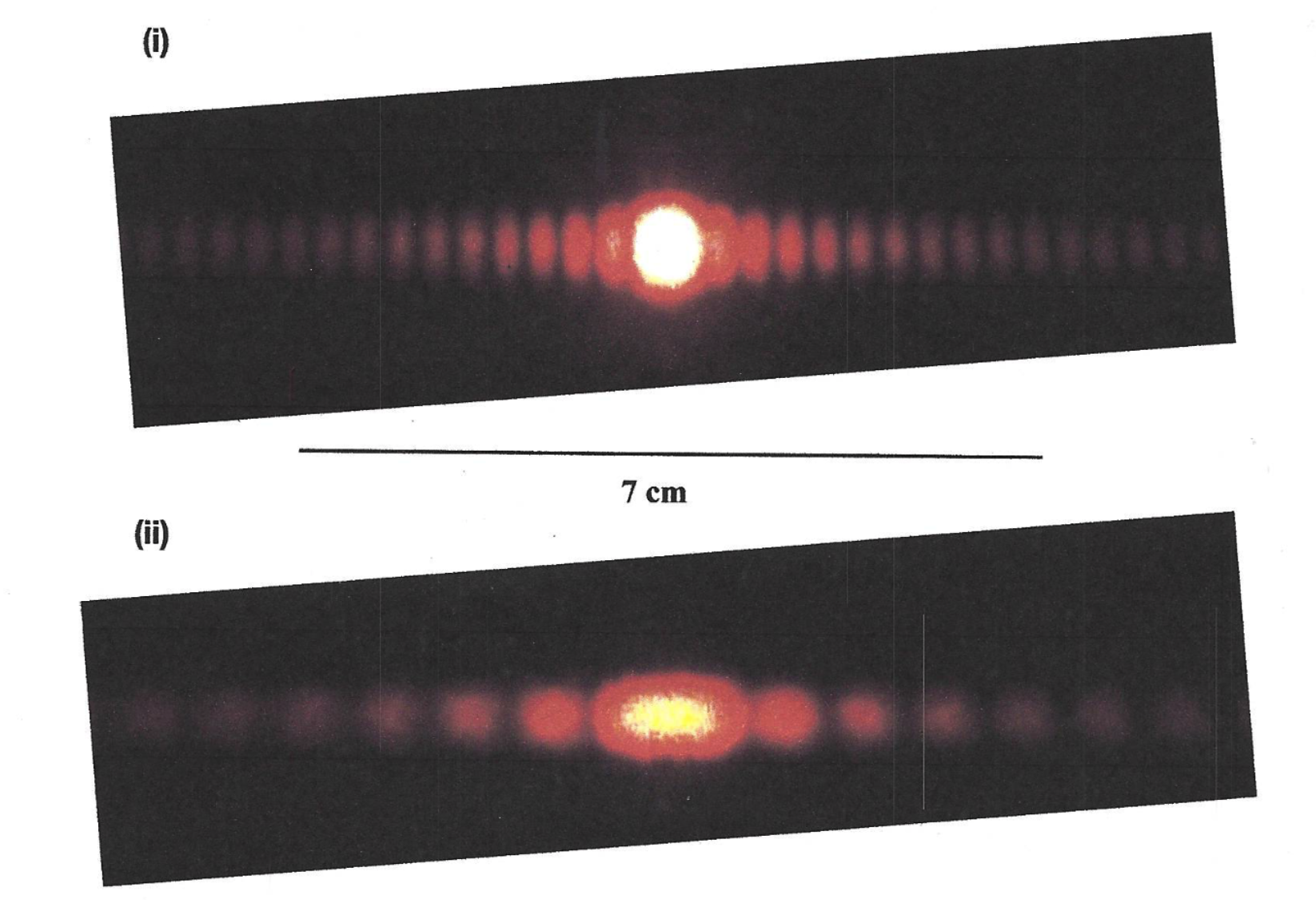Diffraction#
Photographs of the diffraction of a red laser of wavelength \(\lambda = 650\) nm are shown in figures (i) and (ii). A line of length \(7\) cm indicates the length scale on the screen.

Useful Info#
When monochromatic light of wavelength \(\lambda\) passes through a double slit of separation \(d\), constructive interference occurs at angles \(\theta_m\), where \(d\sin\theta_m = m\lambda\) and \(m = {0, 1, 2, ...}\) is an integer. This same relation holds true for light passing through a diffraction grating. Light passing through a single slit will destructively interfere at angles \(a\sin\theta_p = p \lambda\), where \(p = {1, 2, 3, ..}\) is a non-zero integer and \(a\) is the slit width. If a screen is placed at a distance \(L\) behind the slit(s)/grating, bright and dark lines are observed at a distance \(y\) from the central maximum given by \(y = L\tan\theta\). When the small angle approximation \(\theta \approx \sin\theta \approx \tan\theta\) is valid (\(\theta \ll 1\) expressed in radians), one expects a double-slit pattern to display equally spaced bright maxima, whereas a single-slit pattern exhibits a central maximum that is twice as wide as the subsequent maxima.
Part 1#
If the screen was 60 cm away from the diffraction that caused these patterns, to how many digits after the decimal would the small angle approximation (\(\theta \approx\) tan\(^{-1} \theta\)) hold for the largest angle?
Answer Section#
It doesn’t hold at all
Four digits
Two digits
One digit
Attribution#
Problem is licensed under the CC-BY-NC-SA 4.0 license.

